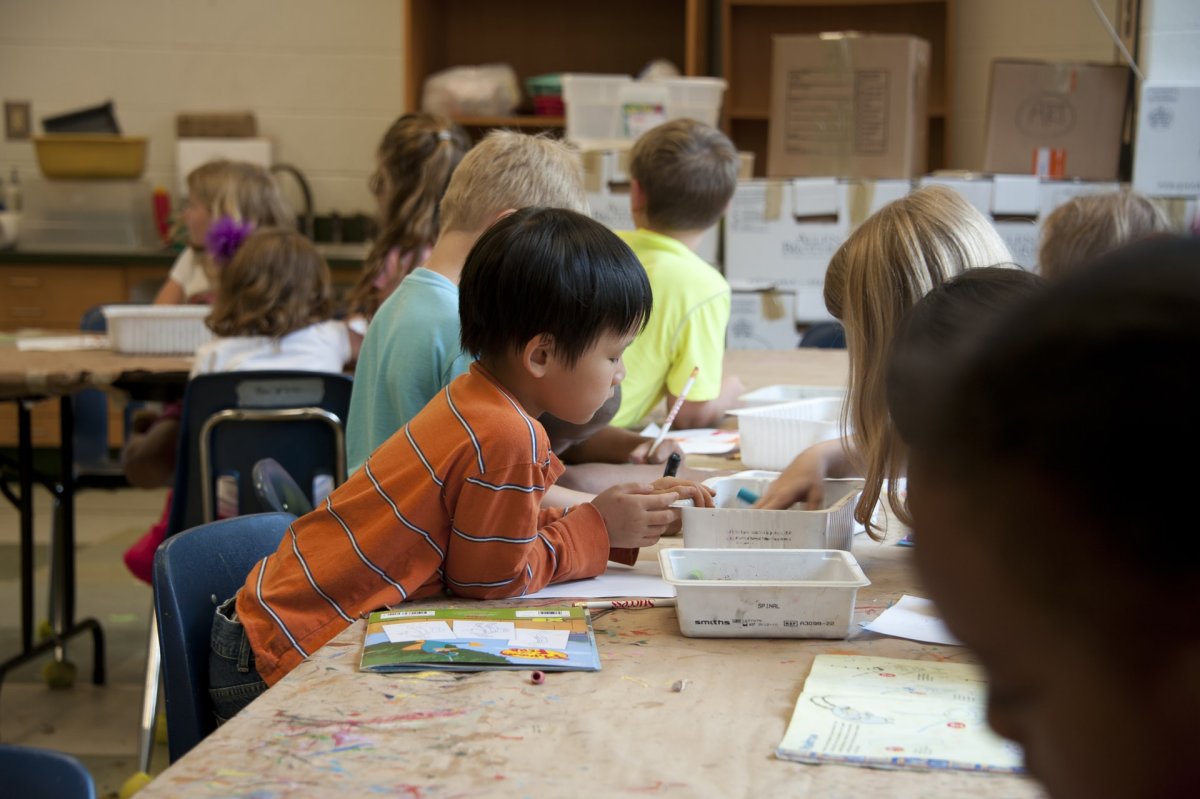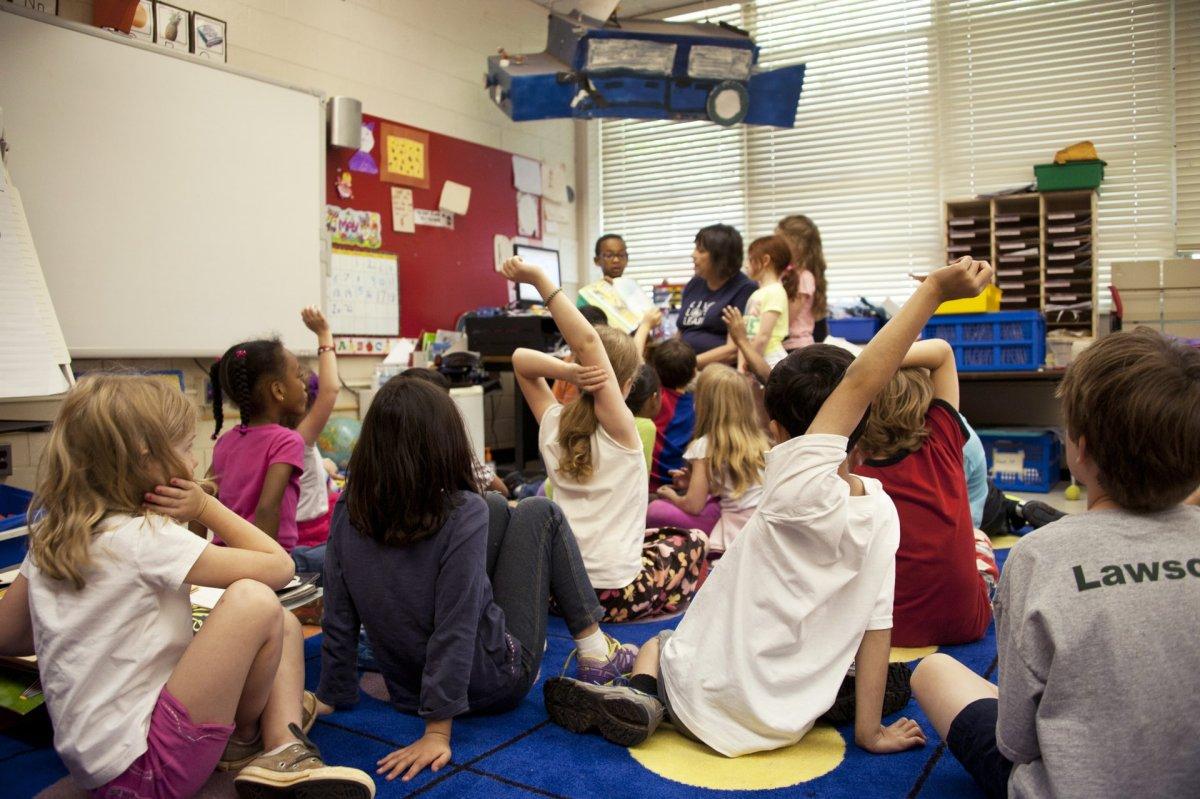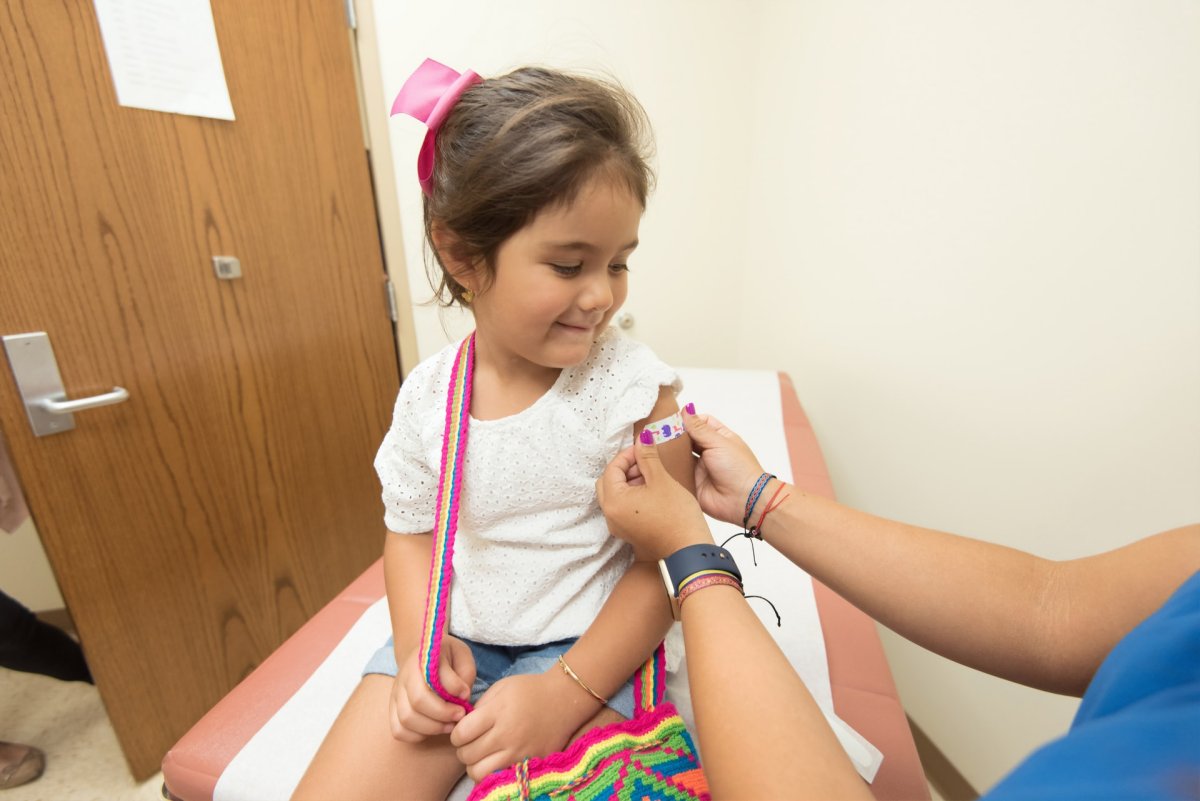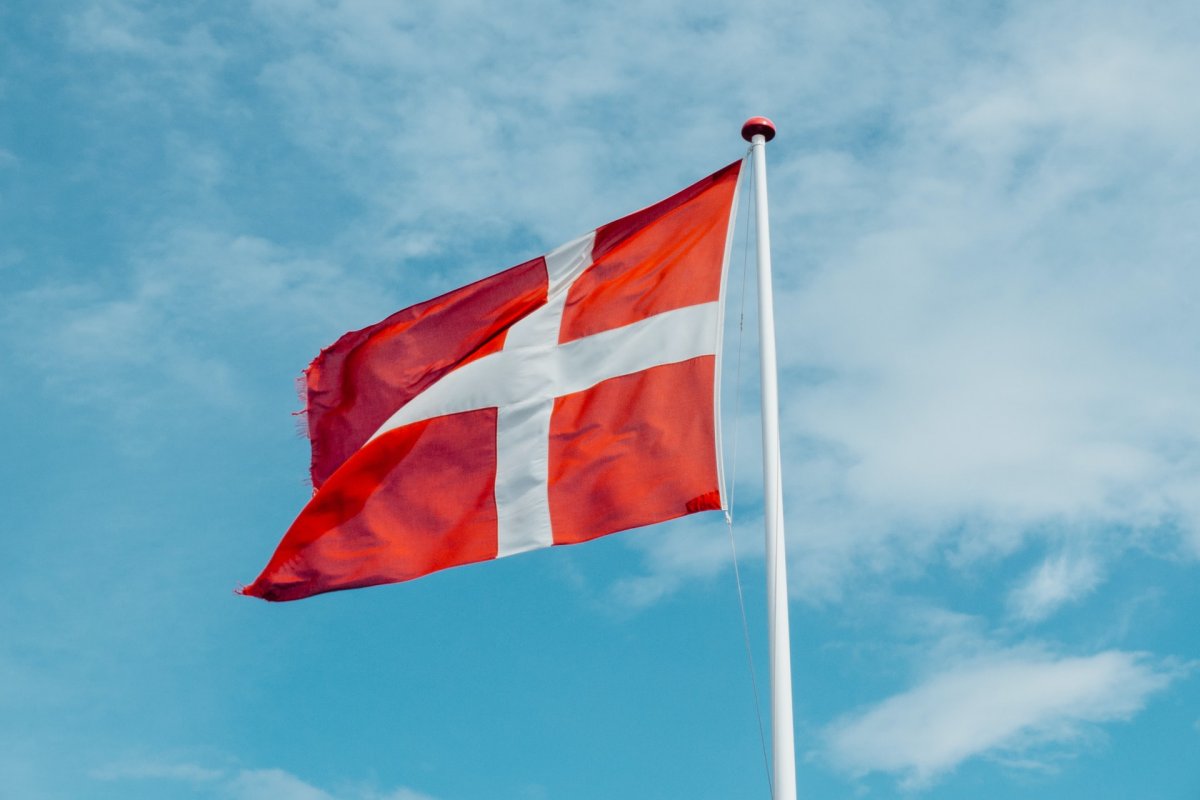31 Sweden Education Facts (all about schools in Sweden)
Did you know that school in Sweden is mandatory until the age of 15? Or that Swede education is free for all European citizens?
Discover more thanks to these 31 Sweden education facts you will love to know! 🇸🇪 🎓
The Best Facts About School in Sweden
Sweden is a large country in Scandinavia. It is located in the northern part of Europe, and it is bordered by Norway, Finland, and is connected to Denmark. Its capital city is Stockholm, which has a bit more than 975,000 inhabitants (but more than 1,605,000 if you count the metropolitan area).
An interesting part of the country that I wanted to tackle is its education. In light of that, I have listed my 31 best facts about the Sweden school system, and I hope you will love them:
1. Swedish school is compulsory until the age of 15
Just like in many countries, students in Sweden are required to attend school until the age of 15.
Typically, the school year runs from August to June, and it is divided into two terms by the Christmas holiday (from mid-December to early January).

2. There are 4 stages in the Swedish compulsory education system
Every Swedish student must pass through 4 phases during their education.
“Förskoleklass”, which means pre-school, only lasts for a year and is considered year 0. After that, there is “lågstadiet” (years 1 to 3), “mellanstadiet” (years 4 to 6), and “högstadiet” (years 7 to 9).
3. School is compulsory for everyone in Sweden, even nomad people (that still exist!)
Everyone in Sweden must attend school, no matter where they live.
This also works for the very unique Sámi people, who are nomads. They usually pass through the northern parts of Norway, Sweden, and Finland, but have dedicated nomad schools for their children.
4. Sámi schools run parallel to the standard primary school system
While 20,000 Sámi is not that much, their culture still exists and remains strong. In fact, they even have dedicated schools.
These schools are part of the public school system, and follow the same curriculum as traditional primary schools. They also always have their own dormitory.

5. Preschool is not mandatory in Sweden, but most children attend it
While preschool, or “förskola”, is not mandatory in Sweden, most parents still choose to enroll their children.
These institutions are provided by municipalities, and it is for children aged 1 to 5. They are subsidized by the municipality, and the amount depends on the child’s age as well as the parents’ situation.
6. Everyone is equal in Sweden, starting in nursery school
Gender differences are taken very, very seriously in Sweden, starting in preschool.
Förskola provides children with gender-aware education and equal opportunities. On top of that, it lays emphasis on the importance of play and makes sure every child’s individual needs and interests are fulfilled.
7. Upper secondary school is optional in Sweden
As you know, Swedish school is mandatory until the age of 15. This means that what comes after that, upper secondary school (or “Gymnasium”), is optional.
Considering how high the enrollment rate is though, most Swedes still attend Gymnasium, and even continue afterward.
8. Swedish students have a wide range of programs to choose from for their upper secondary studies
During upper secondary school, Swedish students must make a tough choice: they need to decide which program they will learn.
There are 18 of them in the country: 6 prepare students for higher education like university, and the rest are basically vocational-oriented training.

9. What matters for studies in Sweden is Swedish, English and mathematics
Depending on the program the student chooses, entrance requirements can vary.
However, what is certain is that Swedish, English, and mathematics are always required, no matter their choice. The grades from the last year of compulsory schooling are the ones that truly matter for upper secondary school.
10. 86 percent of Swedish students qualify for a national program
Most Swedish students, 86 percent in fact, qualify for a national program after the end of their ninth year, on a yearly basis.
This goes to show how efficient the Swedish education system is, and also how high the quality of education is.
11. Students who failed to enter a national program can still pursue an introductory program
While the vast majority of Swedes qualify for national programs, some of them do not have sufficient grades.
All hope is not lost, however, as they can choose to enter one of the five introductory programs, that will eventually lead them to a standard national program.
12. There are special upper secondary schools for every need in Sweden
No one is left behind in Sweden: there are special upper secondary schools for everyone.
For instance, disabled students will always have the opportunity to attend Gymnasium, and amazing athletes will see their program vary a bit, to fit their needs and training schedule.

13. Sweden is very careful about discrimination in schools
Similar to gender differences, any other kind of discrimination is prohibited in Sweden. This is part of the Swedish Education Act, as well as the Swedish Discrimination Act.
Headteachers are responsible for enforcing prohibitions against any kind of degrading behavior or discrimination inside their school.
14. Swedish children have a dedicated convention for their rights
Since 2020, the United Nations Convention on the Rights of the Child is part of Swedish law.
This means that every child’s rights are strictly respected, all around the country. Starting in their early years, children are taught to respect each other and to be respected by adults as well.
15. Swedish teachers are highly qualified compared to others
One of the main reasons why the Sweden education system is so efficient is because teachers are very qualified.
This is due to the fact that since 2011 and a political reform, requirements for teachers are substantially higher than before.
16. Both students’ and teachers’ well-being are really important in Sweden
Again, since 2011, more focus is being put on both the students’ and the teachers’ well-being and health.
For Swedish people, being healthy and well is a necessary condition to properly attend school and to learn in the best possible conditions.

17. Swedish students are regularly assessed
Since the national curriculum was introduced in Sweden, the number of mandatory national subject tests went up from 2 to 3. There used to be one in year 3, and one in year 9. Now, there is another one at the end of year 6.
18. Sweden chose to use letters to grade its students
In Sweden, you won’t be graded with numbers or percentages, but with a letter, from A to F.
Every grade from A to E is a passing grade, only F represents failure. This system follows the general European Credit transfer and Accumulation System (ECTS).
19. Teachers have a high status in Sweden
Both school and pre-school teachers have been required to have a professional certification in Sweden, since 2013.
Since then, the status of the teaching profession has only been getting higher, professional development is supported and the overall quality of education has significantly gone up.
20. Higher education in Sweden is similar to that in Europe in general
The Bologna Process introduced a common system for higher education. In Sweden, like in the rest of Europe, it is divided into three cycles: basic level, advanced level, and doctoral level.
In each of these cycles, there are two degrees available, and their length thus differs.

Hat ceremony in Sweden celebrating the end of high school
21. Swedish education is completely free
You might have already heard of this, but education is basically free in Sweden.
And yes, this also works for higher education! In fact, public master’s degrees are free, and also grant-aided. And not only for Swedes but for any European citizen!
And that is it for the best 21 interesting facts about the education system in Sweden…. Wait, did I say 21? Oh yes, because there are 10 more of them, coming right up:
More Facts About Sweden Free Education
There are so many things to say about Sweden’s free education system that I just could not stop after only 21 facts.
Here, have 10 more facts about Sweden free education:
22. There are also independent schools with public funding in Sweden
While education is mostly free in Sweden, independent schools are on the rise… and they are also free for students.
These schools, called “friskola”, are also publicly funded, and therefore tuition-free. It is only since 1992 that they were provided with public funding, and could thus compete with standard municipal schools.

23. Barely any tuition-based private schools still exist in Sweden
Considering the fact that both municipal and independent schools are free in Sweden, and the very high quality of education, why would anyone want to pay for tuition-based private schools?
Well, because of this, there are only a few of these left in Sweden, and they will probably simply disappear at some point.
24. Independent schools must still follow the general guidelines
Even if independent schools are autonomous, the same rules still apply.
They must follow the national curricula and syllabuses, similar to municipal schools. They also need to be officially approved by the Schools Inspectorate. Independent, yes, but not exempt from rules, fortunately!
25. More and more independent schools are being built in Sweden
You might think of independent schools as a very rare and specific institute… but they actually represent 17 percent of compulsory schools!
When it comes to high school in Sweden, this number goes up to 34 percent. Students vastly appreciate these schools, as 28 percent of them choose “friskola” for their studies.
26. Swedish students can freely go to a school doctor
Another thing that is free in Sweden, and that is often underestimated or simply non-existent in other countries is having access to a school doctor.
On top of that, students can visit a school nurse, a psychologist, or a school welfare officer… all tax-funded.

27. There are 6 governmental authorities dedicated to education in Sweden
Each part of education is managed by a separate governmental authority in Sweden.
The 6 existing authorities are the Ministry of Education and Research, the Swedish Schools Inspectorate, the National Agency for Education, the National Agency for Special Needs Education and Schools, the Swedish National Agency for Higher Vocational Education, and the Sámi School Board.
28. The major Swedish governmental authority dedicated to education is the Ministry of Education and Research
The Ministry of Education and Research rules over most of Sweden’s education system.
It manages the government’s education and research policies, and continuously works on school performance, teachers’ conditions, and study financing. It also writes the curriculum guidelines for the whole nation.
29. There is a dedicated agency for special needs in Sweden
Not only can disabled students and others with special needs have adapted programs and schools, but there is also a dedicated agency for them: the National Agency for Special Needs Education and Schools.
Its goal is to make sure everyone is provided with the same opportunities for education.
30. Swedish higher vocational education is constantly analyzed and improved
Higher vocational education is very important to Swedish people. It is a major part of the future of the country, and therefore needs to be adapted to the labor market.
For that, the Swedish National Agency for Higher Vocational Education continuously analyzes the market’s needs, decides what programs should be included, and allocates public funding to where it’s needed.

31. Even Sámi people have their own school board in Sweden
I told you: Sámi people are a real part of the Swedish community. They are taken very seriously and have in fact their own school board, the Sámi School Board.
Obviously, it rules over all public Sámi schools as well as their other activities.
So there you have them, these were all my 31 interesting facts about the school system in Sweden. I hope you enjoyed them and that you learned something new today.
In case you want to learn more about the rest of the country, feel free to keep reading, as I still have lots of things to tell you about:
Swedish School Hours
Let’s keep going with our next part, dedicated to Swedish school hours. The typical school schedule in one country can often be very different from your own, and it’s always interesting to have more details on how students go on about their day.
Sweden Primary School Schedule
The first two Swedish grades require students to attend school for 6 hours daily. After that, it goes up to 8 hours per day. Students attend school for 40 weeks, from Monday to Friday.
The academic year is broken into two terms, from late August to Christmas, and from January to June.
School attendance is compulsory until age 15.

Swedish High School Schedule
When it comes to secondary and higher education, the school year is broken into two semesters, from mid-August to mid-January, and from mid-January to early June.
Graduating in Sweden takes students from 2 to 5 and a half years.
General Facts About Schooling in Sweden
This last part is dedicated to general facts about schooling in Sweden. More specifically, we’ll check 2 key figures that will give you a better understanding of the education level in Sweden.
Enrollment in tertiary education for Sweden: 62.35%
(Average for regions: Sub-Saharan Africa: 8.6% | South Asia: 20.8% | Arab States: 36.4% | East Asia: 36.5% | Latin America: 43.3% | Europe and Central Asia: 62% | North America: 84%)
Data from World Bank EdStats/UNESCO
Sweden literacy rate: 99%
(Average for regions: Sub-Saharan Africa: 65.3% | South Asia: 72.9% | Arab States: 79.4% | Latin America: 93.7% | East Asia: 95.8% | Europe and Central Asia: 98.5%)
Data from World Bank EdStats/UNESCO
More Education Facts!
Do you want even more education facts about other countries?
Check out these facts:
Or click here to see ALL the education facts up on the blog!
The Full List of 31 Swedish School Facts
- Swedish school is compulsory until the age of 15
- There are 4 stages in the Swedish compulsory education system
- School is compulsory for everyone in Sweden, even nomad people (that still exist!)
- Sámi schools run parallel to the standard primary school system
- Preschool is not mandatory in Sweden, but most children attend it
- Everyone is equal in Sweden, starting in nursery school
- Upper secondary school is optional in Sweden
- Swedish students have a wide range of programs to choose from for their upper secondary studies
- What matters for studies in Sweden is Swedish, English, and mathematics
- 86 percent of Swedish students qualify for a national program
- Students who failed to enter a national program can still pursue an introductory program
- There are special upper secondary schools for every need in Sweden
- Sweden is very careful about discrimination in schools
- Swedish children have a dedicated convention for their rights
- Swedish teachers are highly qualified compared to others
- Both students’ and teachers’ well-being are really important in Sweden
- Swedish students are regularly assessed
- Sweden chose to use letters to grade its students
- Teachers have a high status in Sweden
- Higher education in Sweden is similar to that in Europe in general
- Swedish education is completely free
- There are also independent schools with public funding in Sweden
- Barely any tuition-based private schools still exist in Sweden
- Independent schools must still follow the general guidelines
- More and more independent schools are being built in Sweden
- Swedish students can freely go to a school doctor
- There are 6 governmental authorities dedicated to education in Sweden
- The major Swedish governmental authority dedicated to education is the Ministry of Education and Research
- There is a dedicated agency for special needs in Sweden
- Swedish higher vocational education is constantly analyzed and improved
- Even Sámi people have their own school board in Sweden
Share the knowledge! Click on the buttons below to share these facts about schools in Sweden with your friends, and help them learn more about the world 🙂

![15 Interesting Cambodia Education Facts [100% true]](https://www.kevmrc.com/wp-content/uploads/2022/05/25-cambodia-education-facts.jpg)

